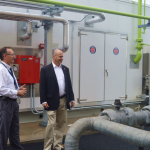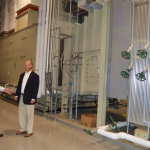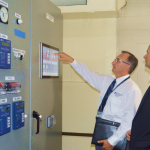Combined Heat and Power for Medical Facilities: Hershey Medical Center
- Business Case Studies >
- Combined Heat and Power for Medical Facilities: Hershey Medical Center
AUDIENCE
Medical Facilities
PROPERTY
Penn State Hershey Medical Center
SIZE
548-Licensed
Bed Facility
GEOGRAPHIC AREA
Hershey, PA
PROJECTED SAVINGS
$2.5 Million in
Annual Operating Costs
Top Priorities: Caring for Patients & Our Earth
Lower Patient Costs Enable Investment in Medical Technology and Research.
The efficiency of Hershey Med's newly installed Combined Heat and Power (CHP) system and the lower energy costs afforded by natural gas will result in a $2.5 million reduction in annual operating costs and a payback of under eight years.
Produce Less than Half the Emissions that result from an electric utility's power.
The reduction of 44,000 tons of greenhouse gas emissions annually has the equivalent effect of removing about 7,200 cars from the road.
Creating Electricity, Hot Water and Steam from a Single Source – Natural Gas
Combined heat and power systems generate electricity and useful thermal energy in a single, integrated system.
Heat that is usually wasted in conventional power generation is recovered as useful energy, eliminating losses that occur when heat and power are generated separately.
At Hershey Med, the recovered heat is used to create steam.
The steam meets for 85-90% of all thermal needs for the entire facility for sterilization, cooking, HVAC, humidification and laundry services.

Undeniable Value
Reliable Electricity Service is crucial for many institutions, especially hospitals.
The investment in a CHP system not only meets 60% of Hershey Medical Center’s power needs, it provides an on-site generation resource to support continued operations in the event of a disaster or electric grid failure.
Grants are offered for the economic and environmental benefits.
For example, Hershey Med received $1.5 million in grants from Pennsylvania through Act 129 and the Department of Community and Economic Development to offset investment costs. Additionally, projects may also qualify for valuable rebates through the UGI Save Smart program.
Other medical facilities are adopting this powerful technology across the state.
Lancaster General Hospital and Danville's Geisinger Medical Center have also taken the steps to reduce their environmental energy footprint while increasing reliability.





